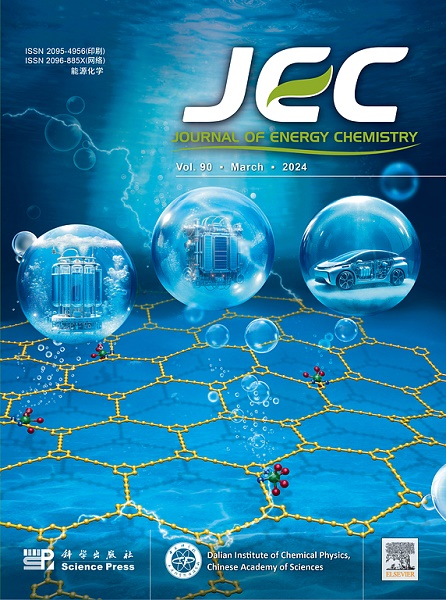Reduced humidity sensitivity of the perovskite fabrication via intermediate treatment enabling stable perovskite solar cells
IF 13.1
1区 化学
Q1 Energy
引用次数: 0
Abstract
High-efficiency formamidinium lead iodide (FAPbI3)-based perovskite solar cells (PSCs) typically involve annealing in humid air during the fabrication process of perovskite films. However, the combined effects of humidity and relatively high temperature often result in the uncontrollable formation of a detrimental PbI2 phase in the perovskite films. As a result, the annealing process of perovskite films is highly sensitive to the relative humidity fluctuations of the environment. Under solar illumination, the undesired PbI2 tends to decompose, accelerating the degradation of perovskite materials and severely compromising the light stability of PSCs. This issue is particularly critical for the buried interface and bulk of the perovskite films, as these regions absorb the majority of the incident light. Pre-treatment and post-treatment strategies are generally confined to address the PbI2 issues at the buried interface and on the surface of the perovskite films, respectively. However, effectively addressing the effects of excess PbI2 at buried interface and grain boundaries within bulk in a single step remains challenging. In this study, we propose an intermediate-treatment strategy using phthalylglycyl chloride (PTC), which involves treating the wet films with PTC prior to annealing during the formation process of the perovskite films. This approach protects the grain boundaries of polycrystalline perovskite films in advance, effectively preventing moisture-induced degradation of the perovskites and thus significantly broadening the relative humidity window of annealing process. Our results demonstrate that this strategy can successfully suppress the formation of PbI2 at the grain boundaries and buried interface of perovskite films, thereby eliminating the PbI2-induced degradation pathways. Our strategy significantly reduces the sensitivity to humidity fluctuations during annealing for fabricating stable PSCs, ensuring more consistent fabrication of stable PSCs. Consequently, the resulting PSCs achieve a champion power conversion efficiency of 26.1% and demonstrate excellent light stability.

求助全文
约1分钟内获得全文
求助全文
来源期刊

Journal of Energy Chemistry
CHEMISTRY, APPLIED-CHEMISTRY, PHYSICAL
CiteScore
19.10
自引率
8.40%
发文量
3631
审稿时长
15 days
期刊介绍:
The Journal of Energy Chemistry, the official publication of Science Press and the Dalian Institute of Chemical Physics, Chinese Academy of Sciences, serves as a platform for reporting creative research and innovative applications in energy chemistry. It mainly reports on creative researches and innovative applications of chemical conversions of fossil energy, carbon dioxide, electrochemical energy and hydrogen energy, as well as the conversions of biomass and solar energy related with chemical issues to promote academic exchanges in the field of energy chemistry and to accelerate the exploration, research and development of energy science and technologies.
This journal focuses on original research papers covering various topics within energy chemistry worldwide, including:
Optimized utilization of fossil energy
Hydrogen energy
Conversion and storage of electrochemical energy
Capture, storage, and chemical conversion of carbon dioxide
Materials and nanotechnologies for energy conversion and storage
Chemistry in biomass conversion
Chemistry in the utilization of solar energy
 求助内容:
求助内容: 应助结果提醒方式:
应助结果提醒方式:


